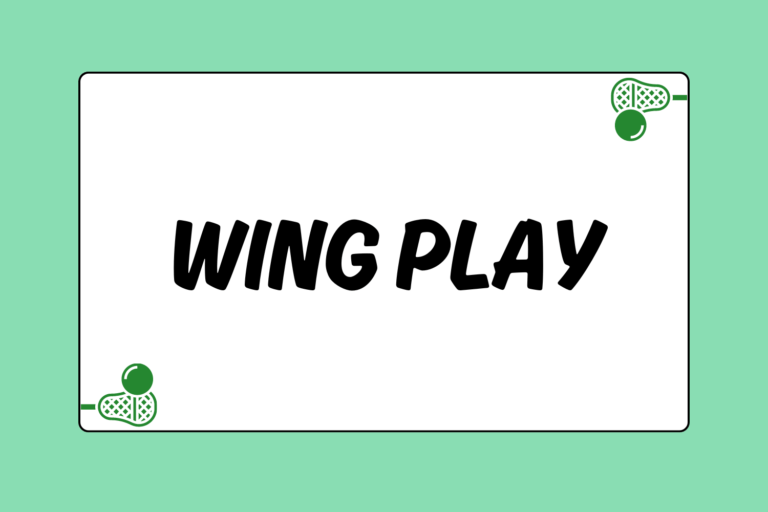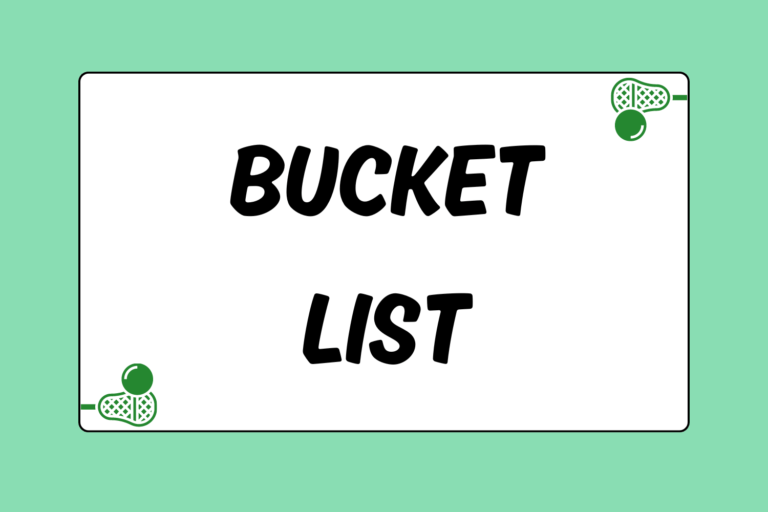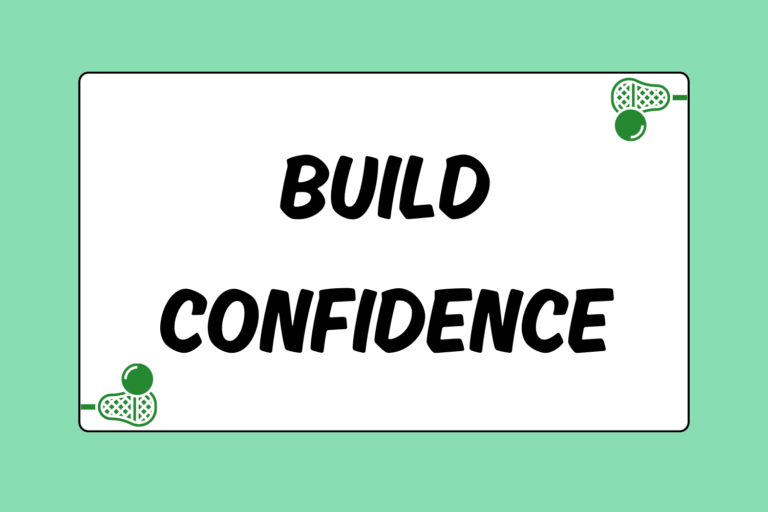Once you’ve gotten comfortable with catching and throwing the lacrosse ball, cradling is the next essential skill you’ll need to master. Cradling is crucial to being able to move around the field while both protecting and handling the ball confidently. While it can be frustrating at first, cradling will eventually become natural. Like dribbling a basketball or soccer ball as you run, cradling is something that should be fluid with your body’s natural movements as you walk, run, or dodge with the ball in your stick.
Basic Movements
The basic cradling motion is a lot like doing curls while weightlifting. Your arm(s) and wrist(s) should be working in unison to keep the ball in the stick as the head moves up and down or side to side. As your elbow bends during your upward or forward motion, the wrist on your top hand should simultaneously curl back. On your downward or backwards motion, the wrist should un-curl and return to its original position.
It’s important to maintain fluidity rather than try to “power cradle” as hard as you can. Being fluid in your cradling with your strides allows for easier dodging and transition from your cradle to passing or shooting. Power cradling forces you to move at a slower pace and to pay more attention to your stick as you maneuver around the field. The goal when cradling should be to not have to look at your stick, just as a basketball player doesn’t want to look down at the ball as he dribbles up the court.
Two-Handed Cradling
Cradling with two hands is the preferred method for players running while not being closely defended, or players who are preparing to shoot, pass, or dodge. Two-handed cradling doesn’t offer the ball-protection of a one-handed cradle. However, the two-hander allows for much greater stick control and a better ability to take tough stick checks, and also gives the player with the ball many options as far as what to do with the ball.
The two-handed cradle involves gripping the stick near the head with your dominant hand, while the other hand is waist height and has a very loose grip at the bottom of the stick. The bottom hand really just keeps the lower end of the stick stabilized in one place, while the top hand and arm do the heavy lifting.
This cradle starts with both hands around waist level. With the face of the stick head facing the sky, begin to raise your arm with the top hand on the stick up to neck height. As you raise your arm and bend the elbow, your wrist should begin to curl as well, bringing the head of the stick into the “box” area adjacent to your head/helmet and over your shoulder. At the height of the cradle, the face of the stick head should be facing downward. The upward force will be negated by the pocket stopping the ball from flying up into the air. Once your cradle has reached its pinnacle, bring the stick back down to the position it started in, with the face of the stick head facing upward again.
Try to match your cradles up with the strides of your feet. Every time the foot on the same side of your body that you’re cradling steps out in front, your cradle should be at its lowest point. When your off-side foot steps out in front, your cradle should be at its highest point.
One-Handed Cradling
The one-handed cradle is most commonly used by attackmen or midfielders looking to run at full speed or to protect the stick from aggressively checking defenders. This cradle offers significantly more stick protection than the two-handed cradle. It also makes it more difficult to quickly pass or shoot, as the ball carrier must first place his free hand on the stick before he will be able to do anything with the ball.
While the two-hand cradle motion is more up and down, the one-handed cradle is side to side, parallel to your torso. This cradling motion is mostly in the wrist and shoulder. Your grip on the stick should be just below the head, and be careful not to have any part of your hand on the plastic of the head. As your stick side foot steps out in front, the stick and arm should be swinging towards your back. Keeping your elbow bent, swing the stick from front to back, making sure the face of the stick head faces towards your chest at all times. Just a little flexing of the wrist is enough to keep the ball in the sweet spot of the pocket. Then, as you step forward with the other foot, swing the stick and arm back towards your chest.
Your main goal with the one-handed cradle is to protect your stick. Here are some crucial things to remember about stick protection with the one-handed cradle:
• Always keep your body between the stick and the defender.
• Keep your stick as close to your body as possible without trapping the ball on your chest.
• Use your free hand (while keeping it still) to create space between you and the defender.
• Your stick should be as close to parallel to your body as possible.
Practicing Cradling
Cradling is something that becomes natural once you have developed muscle memory. Practice it as much as possible. As with most other skills in lacrosse, the ability to cradle confidently and effectively with both hands is crucial. If you aren’t able to handle the ball, you simply won’t be a very effective player.
There are a few tactics you can utilize that will make cradling easier. The first is to deepen your pocket as much as is allowed. Depending on your preference, you can form your pocket for the ball to sit lower or higher, which will affect the way your stick releases the ball when throwing. A lower pocket makes for a slower release on passes and shots, but allows for better ball retention. A higher sitting pocket makes for a quick release, but at the expense of ball retention.
Another thing you can do to improve your cradling is to make sure your gloves are broken in. Stiff or dry gloves can be very nonflexible and can make it quite difficult to grip the stick and cradle comfortably. Be sure to sweat up your gloves really well and to break them in as much and as soon as possible to ensure yourself the best possible grip on the stick.
Hot Tip: Cradling Your Baby
Take your stick and a ball with you wherever you go. The best cradlers learned quickly by having their stick in their hands as much as possible and playing around with different cradles and moves. Learn what your stick can and can’t do with the ball in it. Never put that thing down!
Never Neglect the Cradling
The best lacrosse players are generally the ones who have the best stick skills – this goes right in line with cradling and being able to handle the ball in any situation. Cradling is not a skill that should be ignored when first learning the game. Some players can get away with not knowing how to really shoot or face off, but everyone must know how to cradle and handle the ball while moving at a fast pace. Learn this skill as best and as quickly as you can, and the rest of the game will come much easier to you.





